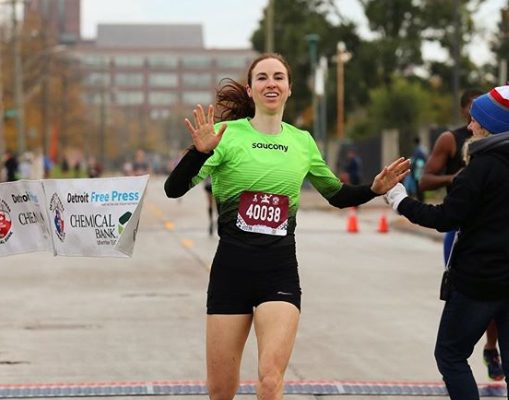Returning to running after pregnancy with Nicole Sifuentes
The two-time Olympian gets real about running during and after pregnancy

Nicole Sifuentes is the former Canadian indoor 1,500m record-holder and a two-time Olympian. She retired from professional running in 2018 and last August, she and her husband welcomed their son, Tonio, into the world. The 35-year-old originally from Winnipeg, Man., has shared some of her journey from pregnancy to motherhood with her followers on Instagram, and we caught up with her recently to talk about her experience running while pregnant and returning to activity post-partum.
https://www.instagram.com/p/CShvzThnOgf/?utm_source=ig_web_copy_link
Study: regular exercise during pregnancy can reduce complications
Throughout her pregnancy, Sifuentes allowed herself to run when she felt up for it, but learned to embrace walking as a lower-impact alternative. “Around three or four months in, I was having a lot of abdominal pain and I couldn’t really handle the impact so I did a lot of walking,” she says. “I would just head out, and when I felt like I needed to stop running I wouldn’t call it a day, I would just walk for a bit. If I didn’t feel like running again I would just walk all the way home.”
As the pain in her abdomen gradually began to lessen, Sifuentes was actually able to do more running later in her pregnancy. She enjoyed doing short, moderate-intensity hill repeats in particular, because they put less strain on her body compared with trying to run fast on a flat road. She also continued to do pilates, which she thinks helped her to run further into her pregnancy. “My pilates instructor was one of the first people I told I was pregnant,” she says. With about a month to go, however, she says she “turned a corner,” and even just walking downtown near her home in Michigan became tiring.
Sifuentes also wore a belly support band, which she felt helped reduce some of her abdominal pain and made running more comfortable. “I’m not 100 per cent sure what it was doing for me, but it definitely felt better with it on,” she says. “I tried it because several runners who I knew who’d run through pregnancy had one, and I felt like it would help me.”
https://www.instagram.com/p/CQULF1IHuiY/?utm_source=ig_web_copy_link
While you often read stories of both elite and non-elite runners storming back after pregnancy to run new personal bests and win races, Sifuentes’ journey has been very different. She didn’t run a step for three months, and her first bout of exercise was a very slow walk around the block. “I think I took 10 minutes to walk 400 metres,” she says, “but I couldn’t go faster because I’d be in pain.” When she finally began running again, she returned to the walk-jog technique that she had used while she was pregnant.
In her words, that first run was “not good.” She got the worst side-stitch she’d ever had, and didn’t go very far, deciding that she needed a few more weeks before she tried to go any farther. Today, four months after the birth of her son, she’s begun running twice per week. “I started with a minute walk, minute jog, and only ran for 10 minutes,” she says, going a little farther each time. At this point, the farthest she’s run is 1.5 miles without taking a break. “My goal isn’t to run farther without any rest every time,” she says. “I always just head out the door to see what happens.”
Not being able to run for several months was very mentally challenging for Sifuentes. Even as an elite runner, she never dealt with any significant injuries that put her on the sidelines for any length of time, so being unable to run added to the mental and emotional challenges that come with having a baby. “While I was in physiotherapy, I knew my body didn’t feel right, and it was hard and discouraging,” she says.
https://www.instagram.com/p/CUleUFxL0tx/?utm_source=ig_web_copy_link
Now that she’s back out there, however, she’s not in a rush to get back to full fitness. She knows there will be setbacks along the way, and while she still has running goals to accomplish, she doesn’t want to force anything before her body is ready. “Running slow doesn’t bother me,” she says. “Now that I’m out there and gaining traction, I’m pretty encouraged and happy with that.”
When asked to give advice to women who are trying to return to running after pregnancy, Sifuentes encourages them to work with a physical therapist. “If someone has any concerns with how their body feels when trying to return to running, it’s very helpful to work with a PT,” she says. Her doctor immediately wrote her off as being able to return to her usual activity after six weeks, but Sifuentes knew her body was in no condition to be doing that. “I already had the referral and appointment set up with the physio, but if I hadn’t known to do that, I would have been incredibly discouraged.”
Finally, she encourages all women who are thinking of becoming pregnant, already pregnant or recovering from pregnancy and childbirth to embrace walking. “Sometimes runners aren’t big into walking,” she says. “I learned to appreciate walking while I couldn’t run. I did long walks, up to 10K, to build up my strength before starting to run at three months postpartum. I think walking was very helpful in preparing my body to run.”


